THE BEST AERO BIKE WHEELS
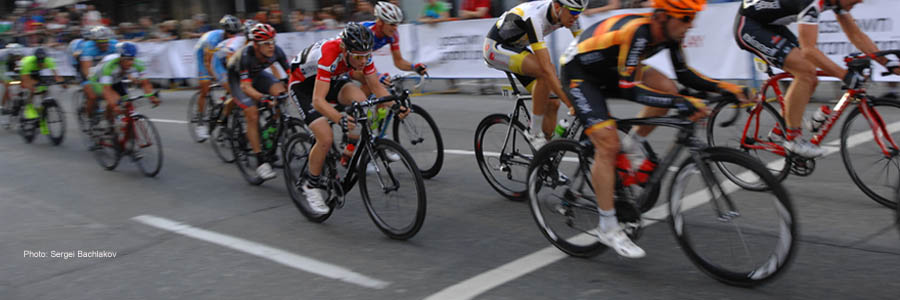
Aero bike wheels look fast, ride fast, and race fast. At roughly 60mm to 80mm deep, they are the wheels of choice for mostly flat terrain for those who ride at average speeds well above 20mph/32kph. They are best suited for time trial and triathlon racing, but some also work well in road races and crits where aero performance is decisive to winning.
For those of us who don’t race but want to go our fastest in training and on competitive group rides, the best aero wheels can give you that extra aerodynamic performance when it’s your turn to pull or sprint for the town line. They provide the stiffness, handling, and comfort you’ll find in all-around wheels 10-20mm shallower while maintaining your speed better than those.
In this post, I review, compare, and recommend some of the best aero bike wheels available today and explain why riders and racers should consider them.
Related: Looking for all-around carbon wheels for your road disc bike? Click Best Carbon Disc Wheelset
Related: Not sure what kind of wheels to get? Click Road Bike Wheels – How To Choose The Best For You
In The Know Cycling is ad-free, subscription-free, and reader-supported. If you want to help keep it rolling without any added cost to you, buy your gear and kit after clicking the store links on the site. When you do, we may earn an affiliate commission that will help me cover the expenses to create and publish our independent, comprehensive, and comparative reviews. Thank you, Steve. Learn more.
BEST PERFORMER – BONTRAGER AEOLUS RSL 62
The Bontrager Aeolus RSL 62 operates best in the aero lane and does it with stability in side winds and comfort across all paved surfaces better than most we’ve reviewed in this category.
Their stiffness, responsiveness, and ability to maintain momentum are on par with other aero bike wheels, while their wider rims handle a 28mm tire without compromising aero performance.
Selling for US$2700/£2200/€2840, you can order the RSL 62 directly from the Bontrager site and Sigma Sports.
Read my full review here.
BEST PERFORMER – ENVE SES 6.7
If TTs and triathlons are your jam or you just like to ride fast where it’s mostly flat, somewhat windy, and on less-than-perfect roads, the SES 6.7 is going to be one of the faster aero and lower rolling resistance wheelset choices and one of two overall best performers in the aero bike wheels category available to you.
On more variable terrain, ones with short, punchy climbs, or in situations where quick accelerations are key to closing or opening gaps, the SES 6.7 would take a lot more work compared to riders around you on shallower, more responsive wheels.
You can order the ENVE SES 6.7 at stores I recommend for US$2850, £3300, €4000 by using these links to Competitive Cyclist, BTD (BikeTiresDirect), Merlin, and Sigma Sports.
Read my full review here.
BEST VALUE – ZIPP 404 FIRECREST

While you can find better-performing aero wheels and lower-priced ones than the Zipp 404 Firecrest Tubeless Disc Brake, it’s the performance-price combination that makes this wheelset the Best Value in the aero bike wheels category.
It’s fast on the flats like its predecessors as you would expect any wheelset with its 58mm rim depth should be.
But, it also climbs and rides across rolling terrain better than most wheelsets 60-65mm deep and as good as some 10mm to 15mm shallower. Add to that its ability to hold its line well in crosswinds, a welcome performance characteristic whether going all out on an exposed flat road or a fast downhill after a good mountain climb.
You can order the Zipp 404 Firecrest wheelset for US$2000, £1700, €1900 using these links to Competitive Cyclist, BTD (BikeTiresDirect), Merlin, Sigma Sports, and BikeInn.
Read my full review here.
WHAT YOU NEED TO KNOW ABOUT AERO BIKE WHEELS
Click on any red statement below to go directly to that part of the post
Find what you're looking for at In The Know Cycling's Know's Shop
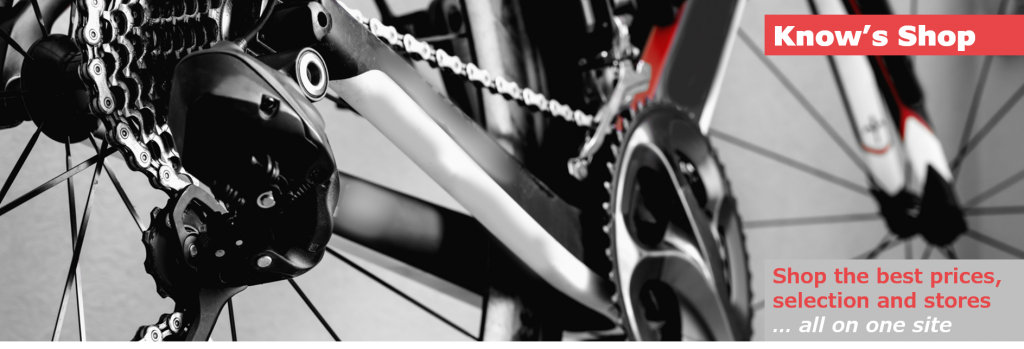
- Compare prices on in-stock cycling gear at 15 of my top-ranked stores
- Choose from over 75,000 bikes, wheels, components, clothing, electronics, and other kit
- Save money and time while supporting the site when you buy at a store after clicking on a link
WHY YOU SHOULD CONSIDER AERO BIKE WHEELS
The world that most cyclists know is flat. Pancake flat for the most part and even flatter than an IHOP pancake in the case of a half-dozen US states, according to researchers. Unless you live in or near the foothills of the Rockies, Sierra Nevada or the Appalachian Mountains, those of us who ride in the United States and Canada are going to be on pretty flat roads most of the time with no more than an occasional and short hill that exceeds a 5% grade.
And despite the wonders of the Alps and other mountain ranges featured in the pro stage races, Europe is mostly flat too. The European Plain, which runs from the Pyrenees along the Spanish and French border all the way to the Ural Mountains in Russia, “gives Europe the lowest average elevation of any continent,” according to no less authority than the Encyclopedia Britannica.
Australia, New Zealand, and the South Pacific? Pretty much flat, flat, and flat. The Sydney Morning Herald reported that “after more than four years” of work, the final topographic maps, covering Australia, New Zealand, and more than 1000 Pacific, Indian, and Atlantic Ocean islands” developed from radar data taken by the space shuttle showed that “Australia was the flattest continent in the world.”
As for the mountains, I’m told by some well-placed elves that only 12% of the world’s population actually lives there.
So why do so many of us look to buy (and read my post recommending) climbing wheels? Perhaps it’s because many of the most famous cyclists going back to icons Eddy Merckx and Fausto Coppi to modern-day heroes like Pogacar, Vingegaard, and Evenepoel conquer the cycling world by climbing mountains.
And why do we focus so much on wheelset weight when choosing between them? Perhaps because weight is one of the most quantifiable differences between wheels. Yet for most riders, reducing our own body weight by 2.5kg or 5lbs would save us a whole lot more in both road time and pocket change than replacing our stock wheels with a good set of climbing ones.
If you are a serious regular cyclist or what I call a road cycling enthusiast, you need to focus on aerodynamics and aero wheels, two things that are critical to cycling fast on the mostly flat earth we ride.
Weight only matters when you are accelerating and when you are going up steep hills and climbs beyond 7% or 8%. But, as explained above, the weight that matters most is your body weight and how much power you can crank out relative to your weight. Your bike and wheelset weight have little relative effect when accelerating and climbing until you are super fit, well-trained, and looking for incremental gains.
Unlike weight, your aerodynamics almost always matters except when you are drafting off someone in front of you or slowly going up steep grades. And the faster you go, the more aerodynamics matters. Aerodynamics matters even more than weight when you are accelerating, though the measured difference between the two is marginal.
If you regularly average about 20mph/32kph and faster on your rides, aerodynamics matters a lot and can save you minutes on a 50 mile/80K ride based on how you position yourself on your bike and what gear (wheels, frame, tires) and kit (helmet, jersey, etc.) you use.
If you are averaging anywhere near 25mph or 40kph on your road rides and races, you are leaving a lot of time on the clock and drag on the road if you aren’t locked into what better aerodynamics can be doing to save you time and power.
The chart below summarizes this; my posts on how to ride faster with better training and technique and gear and kit go into more detail on the role of aerodynamics.

So if you want to go faster, an aero wheelset is part of what will make it happen.
But aren’t aero bike wheels just for time trialists and triathletes, those poor fools that bend over with their hands out in aero bars for miles at a time, not having to worry about making any sharp turns, with no other riders near them to maneuver around, and going so ridiculously fast that those freakishly deep rims they ride on really make a difference?
Yes, deep aero bike wheels are certainly for those riders. They will be on a 60-65mm deep front wheel and an 80mm deep or completely covered disc wheel in the rear. But aero bike wheels, those in the 55mm to 65mm range, are also road racing bike wheels and regular riding wheels for fast roadies riding on flat and moderately rolling terrain.
In 2010 Zipp introduced the 404 Firecrest carbon clincher, a product that changed the direction of high-performance wheelsets of all depths. The Firecrest rim had a rounded “nose” where the spokes attached to the rim and toroid-shaped rim sides. This profile differed greatly from those pointy-nosed, V-shaped ones that deeper rims had at that time. It was also several millimeters wider at the brake track than most other wheels and was 58mm deep.
Testing showed the Firecrest had less aerodynamic drag than much deeper wheels and weren’t buffeted by side winds the way even shallower wheels were. As a bonus, you could actually slow these carbon-rimmed wheels down without growing old, waiting for it to happen, and losing your hearing from all the screeching coming from the braking action.
The Firecrest wheels set a new standard for rim and wheel design.
Most of the leading wheelset companies followed with carbon clincher wheels that emulated the Firecrest 404 shape and depth. Many also introduced triathlon wheels in the 70mm+ range to compete with the Zipp 808 Firecrest for the speed-demon, TT, and triathlon riders. Another group of shallower, 30-45mm deep carbon clinchers also came out for “all-around” riding and climbing led by the Zipp Firecrest 303 and later the 202.
In the last several years, more and more 60-65mm deep, carbon-clincher wheelsets with “blunt” noses or more rounded V or U-shaped rims with 21 and 23mm inside widths and 27mm to 30mm outside widths have been introduced. Tests show these aero bike wheels are nearly as fast as the very deepest triathlon wheels.
The rim profiles have also been refined so that, while affected by sidewinds, the best react in manageable ways rather than getting pushed around so much that you fear getting blown off the road. As they’ve gotten wider, they ride more comfortably and with more rolling efficiency by reducing vibrational rolling resistance in combination with a wider, less inflated tire that still provides a rim-wider-than-tire ratio while remaining laterally stiff and handling well.
Below, I share with you the conclusions I and my fellow evaluators reached after riding many of the best aero wheelsets you can use as racing bike wheels or for riding fast without needing to race. At the end, I also list the aero bike wheels we haven’t reviewed and why.
RATINGS AND REVIEWS OF AERO DISC BRAKE WHEELSETS
Best Performer
BONTRAGER RSL 62 – TRUE AERO BIKE WHEELS WITH A FEW TWISTS
The Bontrager Aeolus RSL 62 operates best in the aero lane and does it with stability in side winds and comfort across all paved surfaces better than most we’ve reviewed in this category.
My fellow testers Nate and Miles rode the RSL 62 and reached some similar and different opinions about them, partly owing to preferences and styles.
Nate rode them first and took some time to get them settled in and adapt to some of the newer aspects of these aero Bontragers. The rear wheel emitted some clicking sounds initially, my guess due to spoke or nipple tensioning issues, but that disappeared after a few rides.
Nate and Miles also found the DT Swiss 240 EXP freehub on the RSL 62 quite loud when coasting, something we all experienced riding this same new hubset on the RSL 51 and a few other wheelsets earlier this year but not to the level of what they heard on the RSL 62.
More significantly, tire pressure, and perhaps tire selection, seemed to affect how well the RSL 62 carried the wheels’ momentum on the road.
The RSL 62’s 23mm internal and 31mm external width on these hooked rims keep most 28mm tubeless tires narrower than the rim for optimum aero performance. Yet at the suggested tire pressure where Nate rode the Bontrager R3 Hard-Case Lite tubeless tires I mounted to these wheels, he was underwhelmed by their cruising speed in the fast group rides he leads.
Miles, perhaps due to his inveterate racer’s mindset, pumped the tires up above the suggested level and found more speed and good maintenance of his momentum once well into the aero-speed realm (22mph/35kph).
Both agreed the Bontrager RSL 62 cut through direct and crosswinds without any issue. And despite their slightly different tire inflation approaches, both also enjoyed comfortable rides with great handling on the wide wheel and tire combination.
Stiffness is another strength of the RSL 62. Miles could translate that characteristic into sprints, where it seemed to him that every watt he put down translated to the wheels that also held the bike right on his line.
Yet neither Nate nor Miles felt the wheelset’s stiffness translated to better than average acceleration and noticed the added effort to take these relatively light wheels (1539 grams with tape but no valves) up even 5% gradient hills.
The RSL 62 are best-ridden fast and probably raced on flat and rolling terrain. Bontrager makes the RSL 51 for more versatile, all-around riding and the RSL 37 for climbing in the mountains.
Selling for US$2700/£2200/€2840, you can order the RSL 62 directly from the Bontrager site and Sigma Sports.
Best Performer
ENVE SES 6.7 – A DEDICATED AERO WHEELSET
There were two areas of questions I especially wanted to answer in our evaluations of the ENVE SES 6.7.
First, how well does it perform against other 60mm or so deep aero bike wheels? If you are looking for a wheelset for mostly flat, fast riding, including time trials or the bike leg of a triathlon, how does the ENVE SES 6.7 rank on the individual performance criteria and overall?
Secondly, how does the SES 6.7, a new model in ENVE’s line, compare with other ENVE wheels of around the same depth or purpose?
ENVE stopped making the SES 5.6, a wheelset I had rated the best performer among all brands of wheels we tested in the aero category, when it started selling the SES 6.7. They also updated the all-around, yet very aero SES 4.5 simultaneously. And ENVE continues to make the unchanged, lower priced ENVE 65 and deeper SES 7.8.
Not long into our first rides, it was immediately clear to fellow tester Nate and me that the ENVE SES 6.7 performs more like wheelsets in the aero category from other brands than the SES 5.6 it replaces in ENVE’s line. Sadly, there’s no sibling resemblance to the responsiveness or versatility that made the ENVE SES 5.6 a standout in this category.
The SES 6.7 holds its speed on flat and rolling terrain well. But to me and the far faster Nate, the SES 6.7 ability to hold its momentum – a surrogate for its aero performance – is indistinguishable from most wheels with similarly deep or even deeper rims we’ve tested.
While I don’t put much stock in wind tunnel data provided by cycling product suppliers as different testing protocols make it hard to compare, even ENVE’s published tests show their SES 6.7 creates somewhere between 1.5 and 4.5 watts less weighted average drag at 30mph/48kph than the selected current or one generation old aero wheelsets they tested from their competitors.
More interesting to me are the comparative wind tunnel results of ENVE’s current SES wheelsets. These showed less than a watt of difference between the 6.7 and 4.5 or 7.8 based on both the weighted average drag and at 0 to 15-degree wind or yaw angles at both 30mph/48kph and 20mph/32kph.
The ENVE SES 6.7 and Bontrager RSL 62 do perform better than other aero wheelsets we’ve tested in their stability and compliance.
While both Nate and I independently noted that the SES 6.7 was sensitive to side winds, the wheel’s response was subtle and gradual. It was almost as if the wheel told me, “I got this,” never changing its direction of feeling fast enough that I felt I needed to react quickly.
For a wheelset this deep (60mm front, 67mm rear), Nate commented that getting pushed around a bit in stronger winds was not unexpected. It seemed reasonable to him that the SES 6.7 would but welcoming that it, like the RSL reacted calmer than other aero bike wheels.
With its wide rims, the 27mm and 28mm tires, once inflated on the SES 6.7, measure up narrower than the 31mm wide front and 30mm rear rims. This rim-wider-than-tire relationship is important to getting that last watt or so of aero performance out of the rim and tire combination.
With other wheels in this category whose outside rim width is 27mm to 28mm, a 25mm or 26mm tire is aerodynamically optimal.
Beyond the aero considerations, I noted that rolling on 27mm ENVE SES and 28mm Continental Grand Prix 5000 S TR made the SES 6.7 wheels “quite pleasant” to ride. I inflated them to around 50psi, given my 148lbs/67kg body weight.
Even at the 65 psi pressure that Nate (155lbs/70kg) pumped them to, he felt “very comfortable” and “totally at home” on the rough, bumpy roads we often ride in New England.
You wouldn’t naturally think that a compliant wheel or rim-tire combination is something a rider looking for ultimate speed would value from an aero-depth wheel or admit to (HTFU!). Yet, we’ve come to realize that wider wheels and tires in the right combination not only make for a more comfortable ride but also make you faster as they reduce your vibrational rolling resistance.
Earlier generation aero bike wheels and even current ones with narrower rims and are more aero with 25mm tires can add vibration loss rolling resistance on all but the best roads that can outweigh the aero benefit of a narrower tire.
Wider rims like those offered by the ENVE SES 6.7 allow for both optimized aero and rolling resistance performance with a 28mm tire.
All of that said, Nate and I concluded that other than for those rolling at 25mph/40kph on relatively flat TT or triathlon courses where you’ve dialed in your position and all the other aero-sensitive aspects of your gear and kit, it’d be hard to justify owning the ENVE SES 6.7 given the option of riding one of the best all-around wheelsets like the SES 4.5.
On more variable terrain, ones with short, punchy climbs, or in situations where quick accelerations are key to closing or opening gaps, the SES 6.7 would take much more work than riders around you on more responsive wheels.
But if TTs and triathlons are your jam or you just like to ride fast where it’s mostly flat, somewhat windy, and on less-than-perfect roads, the SES 6.7 is going to be one of the faster aero and lower rolling resistance wheelset choices and one of two overall best performers in the aero wheelset category available to you.
You can order the ENVE SES 6.7 at stores I recommend for US$2850, £3300, €4000 by using these links to Competitive Cyclist, BTD (BikeTiresDirect), and Merlin.
Best Value
ZIPP 404 FIRECREST – PERFORMANCE FOR LESS
While you can find better-performing aero wheels and lower-priced ones than the Zipp 404 Firecrest Tubeless Disc Brake, it’s the performance-price combination that makes this wheelset the Best Value in the aero wheelset category.
As road disc wheels move into what I’ve identified as their 4th generation, it’s become harder to apply the traditional climber, aero, all-around, etc. labels to describe what type of terrain a wheelset performs best on or what type of rider it would be best suited for.
This latest generation Zipp 404 Firecrest is fast on the flats like its predecessors as you would expect any wheelset with its 58mm rim depth should be.
But, it also climbs and rides across rolling terrain better than most wheelsets 60-65mm deep and as good as some 10mm to 15mm shallower. Add to that its ability to hold its line well in crosswinds, a welcome performance characteristic whether going all out on an exposed flat road or a fast downhill after a good mountain climb.
No, the Zipp 404 Firecrest is not the all-everything wheelset that I and my fellow testers fell madly in love with riding the Zipp 454 NSW. But the 404 is less than half the price of its US$4000/£3200/€3600 upper-crust, heart-throb sibling.
Nor is it the performer across all criteria or as expensive as the US$2850/£3300/€4000 all-around Best Performer ENVE SES 4.5 that excels on flats, rollers, and shorter climbs.
But if you want an aero-category wheelset that performs nearly as well as most on a wide range of road terrain at a price less than many that are best over a narrower range, the Zipp 404 Firecrest is there for you.
As with any wheelset with a deep rim that’s intended for speed, you don’t want to go out and reduce your aero performance by putting a 28mm wide tire on the Zipp 404 Firecrest’s front wheel instead of a 25mm one if you don’t have to. You already get improved comfort and handling thanks to the 404’s added volume and straighter tire sidewalls coming from its 23mm inside width, hookless rims.
Note: If you weigh over 175 lbs, you are better off going with a 28C tire. The recommended inflation pressure for your weight and a 25C tire would put you above the recommended inflation pressure for this rim of 72.5 psi or 5 bar.
While not the plushest or best handling wheels on the block, my fellow tester Miles and I found it’s plenty comfortable enough and handles just fine with our top-rated 25mm wide Bontrager R3 Hard-Case Lite and Schwalbe Pro One TLE tires that we tested on this wheelset. (The discontinued Zipp tires you see in the photos were used only to soothe my aesthetic sensibilities.)
For the Zipp 404 Firecrest, your tires must be tubeless and hookless compatible. And if you are partial to riding 28mm rubber, you can be both aero and comfortable if you are willing to work with me. Put a 25mm tire on the front wheel where aero performance is crucial, and a wider tire adds little extra comfort. Then mount up a 28mm on the rear where aero is less decisive, and you’ll feel the comfort of a wider tire more.
Unlike the hubs used on the Zipp 454 NSW or ENVE SES 6.7 and many other performance-carbon wheelsets these days, the ZR1 freehubs used on the Zipp 303 and 404 Firecrest wheels are loud. They’re just as audible but not as rich sounding as the Chris King or even the Industry Nine hubs you can select or build into some wheelsets.
The freehub noise Miles and I heard may be beautiful music to your ears. Just know that you can’t coast in the wheels of your group ride mates or a competitive race peloton with 404s rolling underneath you without being noticed and likely encouraged to take more than your share of pulls or be more easily marked if you try a breakaway.
But the way this US$2000, £1700, €1900 wheelset performs, your buds may think you’re riding a more expensive set. And with how well you move across all pitches of paved roads, they may think you are fitter than you may actually be.
With the Zipp 404 Firecrest’s performance and its 1521 gram weight per my scale, it’s hard to see a reason to buy a 10-15mm shallower, more typical 40-50mm deep wheelset for so-called all-around riding. The latest Zipp 303 Firecrest falls in that depth range, but my experience suggests it’s better for very hilly terrain and mountain road climbs as an all-arounder.
Certainly, it’s not a budget wheelset. There are many available from established and new brands that sell for less. But the Zipp 404 Firecrest clearly outperforms all of those we’ve tested in that price range. That performance, in my humble opinion, justifies the added spend.
In our experience, this is a wheelset that performs comparably to or better than many aero or all-around ones that cost more and can do so across a mix of terrain that few more expensive wheelsets can.
You can order the Zipp 404 Firecrest using these links to Competitive Cyclist, BTD (BikeTiresDirect), Merlin, Sigma Sports, and BikeInn.
ENVE 65 – AN AERO FOUNDATION
If you’re not all-in on aero but want some aero benefits, the ENVE 65 wheelset provides a solid foundation for aero riding without making a maximal investment.
What is all in? Aero frame, aero components, aero kit, 23-25mph/37-40kph, TT, and crit racers, where every bike length matters.
What is want some aero benefits? Race bike, aero aware, 20mph/32kph and up, fast group rides, occasional races, where going fast on flats and gently rolling terrain matters.
Most aero bike wheels aren’t versatile enough to ride on all terrain. But on the right terrain and in the right riding situations, the best aero wheels make a decisive speed difference when compared to shallower, all-around ones.
 If you want the benefits of the best aero wheelset performance but can’t quite justify the investment, the ENVE 65 will get you close and for a lot less. At US$1400 for the ENVE 65, that’s over US$1000 less than my best-rated aero road disc wheelset performers. ENVE’s pricing outside the US, £1800, €2200, puts them at a far smaller discount in other regions of the world.
If you want the benefits of the best aero wheelset performance but can’t quite justify the investment, the ENVE 65 will get you close and for a lot less. At US$1400 for the ENVE 65, that’s over US$1000 less than my best-rated aero road disc wheelset performers. ENVE’s pricing outside the US, £1800, €2200, puts them at a far smaller discount in other regions of the world.
The ENVE 65 is stiff and compliant. That’s a great combination to have in any wheelset, one that other aero and all-around wheelsets I’ve ridden priced in the same range as the ENVE 65 rarely pull off.
Aero performance is, obviously, the critically important measure of an aero wheelset. While we can’t test them in a wind tunnel, I and my fellow testers Nate and Miles can and have judged and compared how well these and other aero wheels hold their momentum at a range of aero speeds.
Based on those admittedly subjective evaluations, the ENVE 65 is on par with higher-priced aero wheelsets, though slightly off the pace of the best.
It also holds its own or, perhaps better said, holds you reasonably close to your line in crosswinds, better than some and not as well as others in our experience. The ratings and review chart provides specific comparisons on this measure.
The ENVE 65’s 28.3mm outside rim is wider than the tire per my measurements with the ENVE hookless rim compatible and approved/recommended 25mm tubeless tires.
Acceleration, handling, and climbing performance are on par with the average aero disc wheelset in this review but off the pace of the best performers. Whether those performance differences would be noticeable in a flat or rolling TT or crit is debatable. They would if you were to take them on hillier terrain or races with more demanding cornering.
The same ENVE Alloy hub internals engage and roll very well on the road and emit a low-frequency, hollow sound. The 65 uses the Foundation hub shell, only 6 grams heavier than the ones used on ENVE’s SES wheels which are milled to allow for their paired spoke lacing. You can also order the ENVE 65 with a distinctively louder Industry Nine hub if you prefer.
So how do the aero category’s Best Performers compare to the ENVE 65, and is that performance enough to justify the price difference?
The Best Performers are less affected by the crosswinds and can mount 28mm tires to provide more comfort and lower vibration loss rolling resistance without reducing aero performance.
The choice is up to your aero performance id and cycling budget ego to resolve.
You can order the ENVE 65 wheelset at my top-rated stores using these links to Competitive Cycling, BTD (BikeTiresDirect), and Merlin.
REYNOLDS BLACKLABEL AERO 65 DB – STIFF, FAST GLIDERS
If you are looking at an aero wheelset like the Reynolds Blacklabel Aero 65 DB, you should be all about going fast. You likely race and may even live to do so. But you certainly have speed as your top priority, and there’s nothing else in your top 5.
You’re probably doing the whole aero thing – an aero bike, aero position, aero road helmet, racing kit, shaved legs, etc., etc. You don’t care much about things that don’t matter when it’s all about going fast for you. Things like comfort, climbing, and even the occasional crosswind are distractions at best.
If that doesn’t describe what you are looking for, you’re in the wrong aisle (or the wrong review).
If it does, come a little closer, and let me tell you about this Blacklabel Aero 65 DB wheelset from Reynolds.
The bottom line, this is a stiff, fast wheelset. My fellow tester Miles, a P/1/2 crit and road racer who finishes top 10 in his age group at the US Masters Nationals, reported that “once in a full sprint, these wheels just simply fly.”
Riding the Aero 65 DB wheelset enabled him to snap a bunch of sprint-oriented Strava KOMs and make his Giant Propel Advanced SL Disc go about as fast as he thought it could.
Speed comes from a stiff wheelset that responds when you tell it to go with rims that cut through the air on smooth-rolling hubs. That’s the make-up of this wheelset.
The Blacklabel Aero 65 DB uses i9 hubs. They’re louder than most but engage quickly and roll easily. The rims have a V-shaped profile with internal spoke nipples that trades-off crosswind performance and easy spoke tensioning adjustment for straight-ahead lift.
Remember, it’s about the speed with this wheelset. If loud hubs and the need to keep both hands on the bars in the crosswinds isn’t for you, neither are these wheels. They also aren’t the most comfortable wheels at the 75-80psi that Miles rode them at or the 60psi that I did on Continental Grand Prix 5000 TL tires that mounted easily but took a few iterations to seal and hold air.
For these Reynolds wheels, it’s not just about going fast in a sprint or straight line. Both Miles and I experienced the momentum the Aero 65 DB gave us to quickly punch the kind of 100-meter climbs up to about 10% you’ll often find on circuit races. We were also impressed with how well their aerodynamics assisted on extended climbs up to a 5% grade.
Oh, and they corner very well at speed too. While crits and road races are only a dream in the age of Coronavirus, when we tested these wheels, Miles reported he “was able to confidently whip through some corners at around 30mph” in his non-race testing.
I don’t often ride that fast, even on a straight, but when I do, I feel the sensation of gliding along at such pace and with such ease that I could block out the stresses of life around me.
If you’re all about going fast and doing crits and rolling road races and time trials – and everything else be damned – you should consider the Reynolds Blacklabel Aero 65 DB. At US$2300, £1800, €2160, it is also competitively priced among others in the aero wheelset category.
You can get it from Tredz (10% off w/code ITKTDZ10), a store I recommend for its low prices, good selection, and high customer satisfaction ratings.
ZIPP 808 FIRECREST – MISSION SPEED!
Any wheelset that’s 80mm deep, like the latest tubeless, disc-brake Zipp 808 Firecrest, will have an intensely focused mission. Speed!
Your wheels play an important role on the track or in a time trial or triathlon, or any ride on a course with a similar profile where pure speed matters more than shrewd strategy. While not as important as your physiology, fitness, or body position, wheels are one of the equipment choices that matter most, along with your bike, clothing, helmet, bars, and tires.
And when deciding between wheels for these events, aero drag plays the most important role compared to other considerations, including stiffness, weight, comfort, and rolling resistance.
Differences in TT and triathlon courses can and often change how well a given wheelset performs for you. Some courses are quite flat, while others have rollers or a key climb. Some are relatively straight, while others have a lot of turns that can make it quite technical. Regardless of the terrain and turns, some TTs and triathlons fall on days with little to no wind, while others happen in places or at times when there’s always some wind to contend with.
I’m not a triathlete, TT racer, or trackie. And while I like to ride fast, I’m not worthy of a wheelset like the Zipp 808 Firecrest, which hits its stride around 25mph/40kph
Fortunately, my fellow testers Nate and Miles are fast, worthy riders. Nate leads a weekly Bullet Train group ride that averages in that mid-twenties mph, early-forties kph speed range and has done his share of individual and team time trials. Miles is a regular P/1/2 and masters racer who competes regionally and nationally in crits and stage races that include time trials.
They both know high-speed riding and racing and more tactical road racing on flats, hills, and climbs. They each tested the Zipp 808 Firecrests on various fast rides and races. I’ve captured their feedback here.
With the Zipp 808 Firecrest beneath you, you almost immediately feel the wheels holding your speed on the flats even before getting up to race pace. They seem to just roll without too much effort. And once you are cranking in the big gear at aero speeds, they feel like a steamroller. They just go.
But do they roll any faster than a 60-65mm deep aero wheelset in a race or fast ride? Perhaps, but the 808 Firecrest don’t feel like they are dramatically more aero or hold higher speeds with less effort the way going from a 40-45mm all-around to a 60-65mm deep aero set of hoops does.
Nate rode the same time trial with the 808s on his Specialized Venge aero bike and a shallower set of wheels on his more road race-oriented Specialized Tarmac. He finished with essentially the same time at the same average power.
While it’s tough to control for other factors (e.g., differences in temperature, humidity, wind, etc.) and with only two data points, it’s most likely that the rolling terrain of the course limited Nate’s ability to ride at a speed fast enough where the deeper Firecrest would make a difference.
This isn’t inconsistent with what wind tunnel testing of wheels of different depths has shown. It’s a cycling case of diminishing returns; aero drag reduction improvements get smaller as wheels get deeper or as testing speeds get lower.
We used 28mm Continental Grand Prix 5000 S TR tubeless tires with sealant for all of our testing. That’s the width that Zipp recommends to optimize the 808 Firecrest’s aero performance and the tire that independent tests have found to have among the lowest rolling resistance of tubeless tires that use a puncture belt.
The wheels themselves measure 1673 grams on my scale, including rim tape, valves, and an XDR freehub. Both the front and rear wheels average 23.3mm inside and 27.4mm maximum outside width measured at a half dozen places on each wheelset.
Aerodynamically, 28mm tires on 27.4mm width rims go against the rim-wider-than-the-tire principle. Inflated both to 60psi and 80psi (the latter pressure above the recommended ETRTO recommended 5 bar/72.5psi limit for hookless rims like the 808), four of the best tubeless tires with puncture belts I recommend come in between 29.7mm and 30.7mm wide per my measurements on these wheels. (The fifth isn’t made in 28mm width.)
So why use a 28mm tire instead of a 25mm one that would set up much narrower on the rim?
While we’ve ridden 25mm tires on the Zipp 404 Firecrest and Zipp 454 NSW wheelsets that have similar inside and outside width dimensions to the 808 Firecrest for just this reason, that was before Zipp published their hookless road tire compatibility chart.
And of the best tubeless tires with puncture belts that I recommend – Conti GP 5K S TR, Schwalbe Pro One TLE, Specialized S-Works Turbo RapidAir, Michelin Power Road TLR, and Veloflex Corsa Race TLR – only the 25mm size Schwalbe and Veloflex are noted as compatible with the 808 Firecrest and Zipp’s other 23mm inside with wheels on their chart.
With my calipers, both of the compatible 25mm tires measure essentially the same width as the outside dimension of the rim once mounted and inflated in the 60 to 80 psi range.
Rim depth, tire choice, tire and rim widths, and inflation pressure all matter to how fast you’ll go
Additionally, parent SRAM’s tire pressure guide urges a rider heavier than 82kg/180lbs to go up to a tire wider than 25mm when using a tubeless, hookless wheelset like the 808 Firecrest.
For the TT/Tri athlete willing to ride on race day with a tire with lower tested tire loss rolling resistance but no puncture belt, only the 25mm Continental GP 5K TT Tdf passes the compatibility guideline.
Further, for my review of how wide wheels and tires can make you faster, I found that emerging yet incomplete research shows that the reduction in vibration-caused rolling resistance you get from a wider, less inflated tire can more than overcome the increase in aero drag caused by that same tire exceeding the rim’s width in situations where high aero speeds and less than perfect road surfaces are at play.
In our road testing, we found the 28mm Conti GP 5K S TR – Zipp 808 Firecrest combination quite comfortable on good and bad paved road surfaces. At a minimum, this didn’t dissuade Nate and Miles from slowing down the way a jittery ride might.
That same 28mm tire on a wider rim that measures wider than the tire would reduce both aero drag and vibration-created rolling resistance. As the Zipp 808 Firecrest rim width is what it is, it looks to me that you need to choose from a limited number of 25mm tires, ride good surfaces, and be a lighter rider that requires less inflation pressure to get that both the optimum low aero drag and rolling resistance.
Your ability to keep going fast is also affected by how your wheels react to winds coming from the side. If you get pushed off your line, you’ll be slowed by fighting back. And if you get pushed too much, you may back off the gas a touch (or more) out of your desire to stay upright.
In this context, the 808 Firecrest wheels performed well but within limits. They exhibit an almost “gyroscopic stability” that counteracts the sideways directional force from the winds to keep them in line. They want to roll in a straight line when you are going fast.
Nate noticed this counteracting effect within the first mile of testing. The wheels were much less eager to turn, whether the wind wanted them to turn or he wanted them to turn without any wind.
When it got quite windy, however, as in above 10 mph, Miles, rather than the wheels, had to do the work to keep the wheels tracking. With gusts above 15 mph, not an uncommon occurrence where we ride in New England, Miles had all he could do to keep himself upright.
At times Miles rode his Giant Propel aero bike with his elbows on the tops in a time trial position. The wheels felt great when it was calm, but any wind made him nervous. Admittedly, this effect would be lessened if he used aero bars rather than the recently UCI-outlawed praying mantis or puppy paws position.
While Nate and Miles weigh in the 155-160lb/70-73kg range and aren’t dedicated time trial or triathlon riders, neither are immune to and both are experienced with riding and racing in various road or weather conditions.
What came out in their experience riding the Zipp 808 Firecrest as compared to the many 60-65mm deep wheels we’ve also tested was the reduced maneuverability of these deeper wheels.
While the 808s are very stiff and reasonably light wheels, given their depth, they don’t handle or respond to acceleration efforts as easily or quickly as their shallower aero wheelset competitors. The difference is noticeable on a parkour with many turns and some climbing far more than the added speed you may get on a straighter, flatter course.
For these reasons, Miles passed on using the 808 Firecrest on the TT stage of the Green Mountain Stage Race, and Nate preferred to use 60-65mm deep wheels on his Bullet Train rides. Both courses have more breeze, turns, and rollers than the boys thought the 808s would excel at. And neither would ride them in a crit – too many turns and a tick or two slower acceleration coming out of them regardless of the terrain or wind conditions.
This begs the question – would the lighter, scalloped 858 NSW that Zipp introduced at the same time as the 808 Firecrest be more suitable on a breezier, twistier, hillier course?
And would it be worth the 2X price you’d have to pay for it?
I’d only be speculating if I were to try to answer the first question and substitute my value judgment for yours with a response to the second one.
What is pretty clear, though, is that the Zipp 808 Firecrest is best suited for flat, straight, and calm weather high-speed time trial or triathlon events and similar rides.
At US$2300, £2235, €2540, they’re a modest discount compared to the best 60-65mm deep aero bike wheels. If you race the kind of events we’ve found these wheels best suited for or are looking to start doing so, the Zipp 808 Firecrest would be worth considering.
You can find them at these links to recommended stores Competitive Cyclist, BTD (BikeTiresDirect), Tredz 10% off with code ITKTDZ10, and Merlin.
WHEELSETS WE’D LIKE TO REVIEW NEXT
Full Priced Carbon
Campagnolo Bora WTO 60 – I’ve not been able to get a hold of one yet to test. If I do, I’ll add it to this review. (link to Know’s Shop).
DT Swiss ARC 1100 Dicut DB 62 – Another one I hope to test. The rims are designed by Swiss Side, made by DT Swiss, and use DT’s 240 hubs and Aerolite spokes. The wheels are typically discounted from their original high asking price to bring them in just under some of those I’ve reviewed above.
HED Vanquish RC6 – Chalk this up in the column of haven’t but hope to ride it soon. I’ve tested the Vanquish 4 (read the review here) and hope to ride the Vanquish 6 at some point. If you can’t wait, you are in good company and can follow this link to Know’s Shop to buy it online at stores I recommend.
Value Carbon
Many brands sell 55mm and deeper wheelsets in the $1000-$1500 range. I’ve been digging into the broader group of wheelsets I call “value carbon” in a multi-part examination and set of reviews starting with my post The Best Carbon Wheelset for the Money.
While that post focuses on 40mm – 50mm all-around value carbon wheelsets, many of the same companies also sell deeper wheels at similar prices. I believe much of what I’ve found in my research for that review extends to those selling aero bike wheels.
It’s a broad generalization, but from what I’m finding so far, the saying that you get what you pay for appears to hold true among value carbon wheels. The question we roadies each have to ask ourselves is whether we need all that the full-priced wheels provide.
There are 10,000 words about this in the post I linked you to above, so I’ll stop here and encourage you to go there if you are interested in reading more.
* * * * *
Thank you for reading. Please let me know what you think of anything I’ve written, or ask any questions you might have in the comment section below.
If you’ve benefited from reading this review and want to keep new ones coming, buy your gear and kit after clicking the store links in this review and others across the site. When you do, we may earn an affiliate commission that will help me cover the expenses to create and publish more ad-free, subscription-free, and reader-supported reviews that are independent, comprehensive, and comparative.
If you prefer to buy at other stores, you can still support the site by contributing here or by buying anything through these links to eBay and Amazon.
You can use the popup form or the one at the bottom of the sidebar to get notified when new posts come out. To see what gear and kit we’re testing or have just reviewed, follow us by clicking on the icons below.
Thanks, and enjoy your rides safely! Cheers, Steve
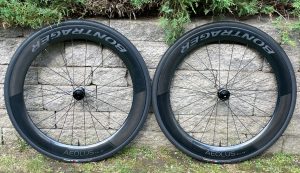
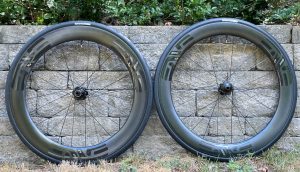
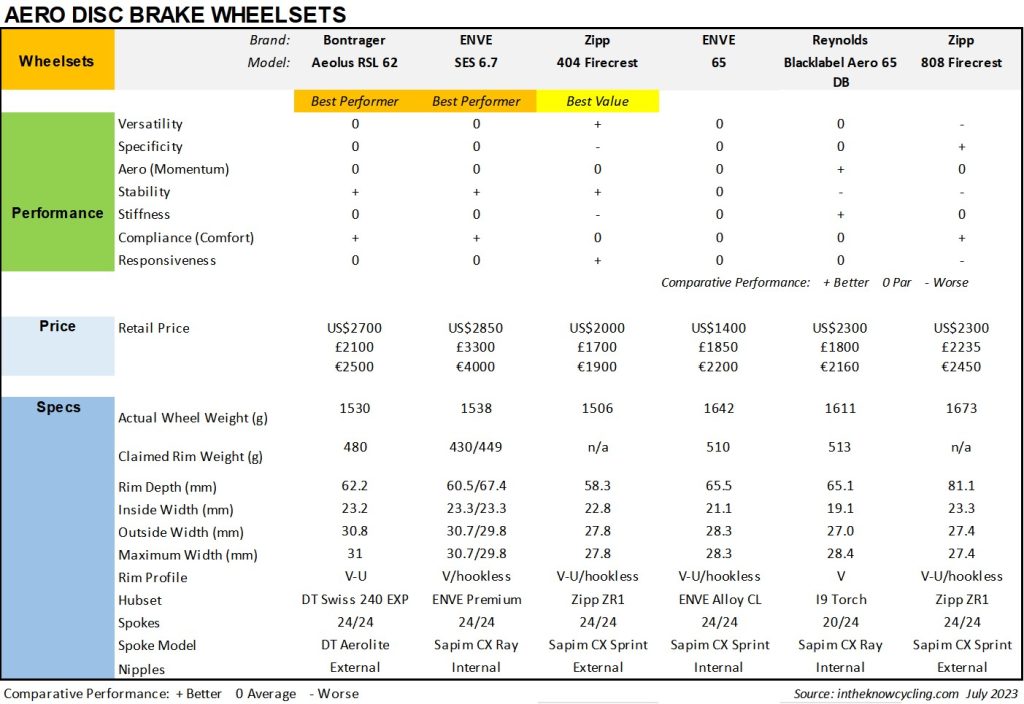

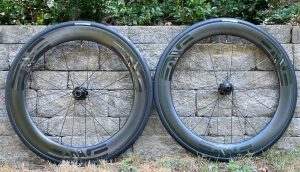
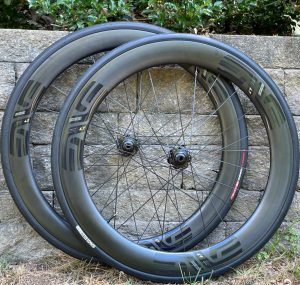
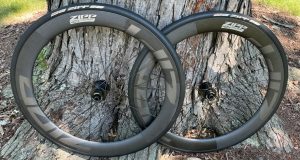
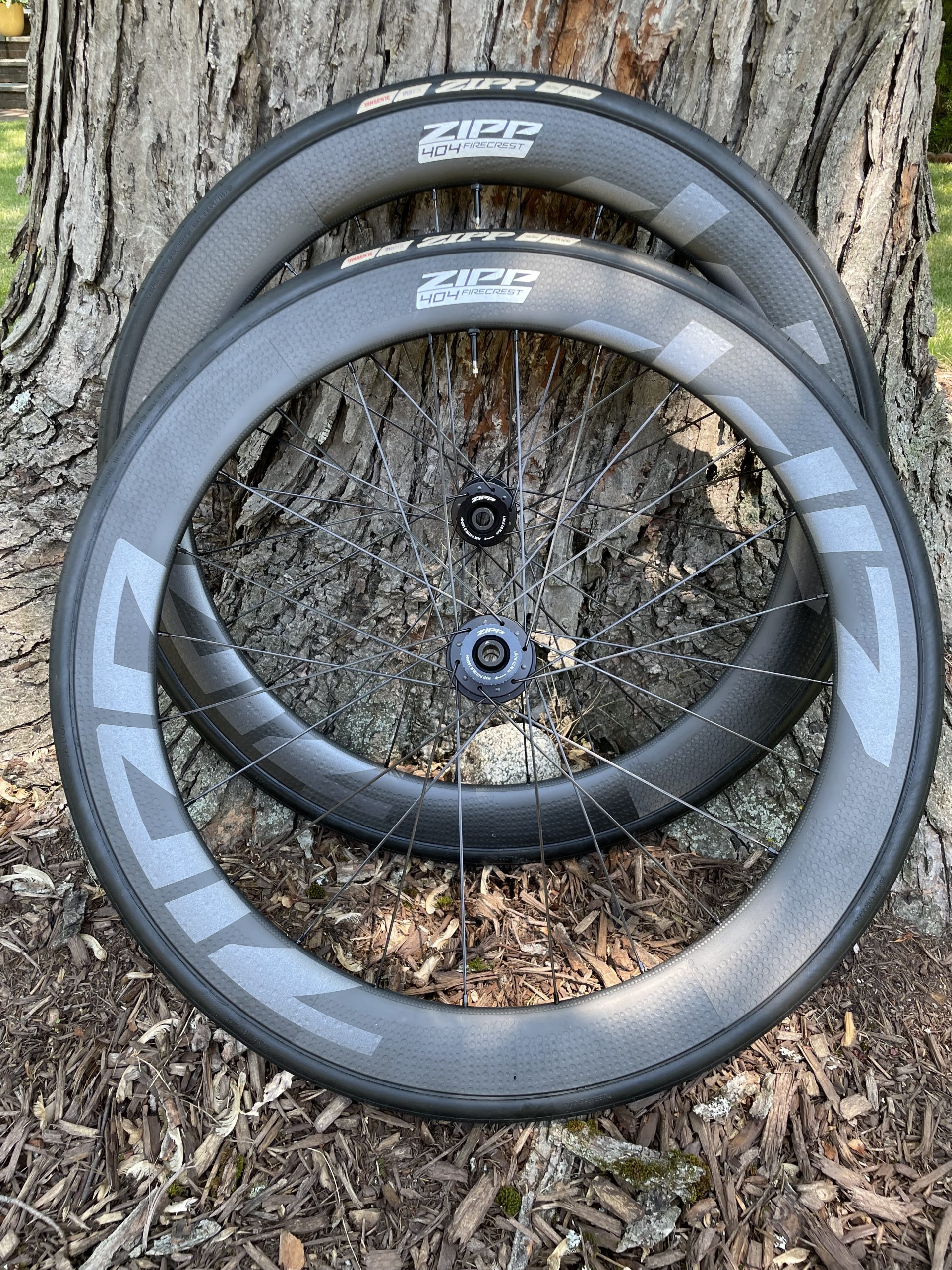
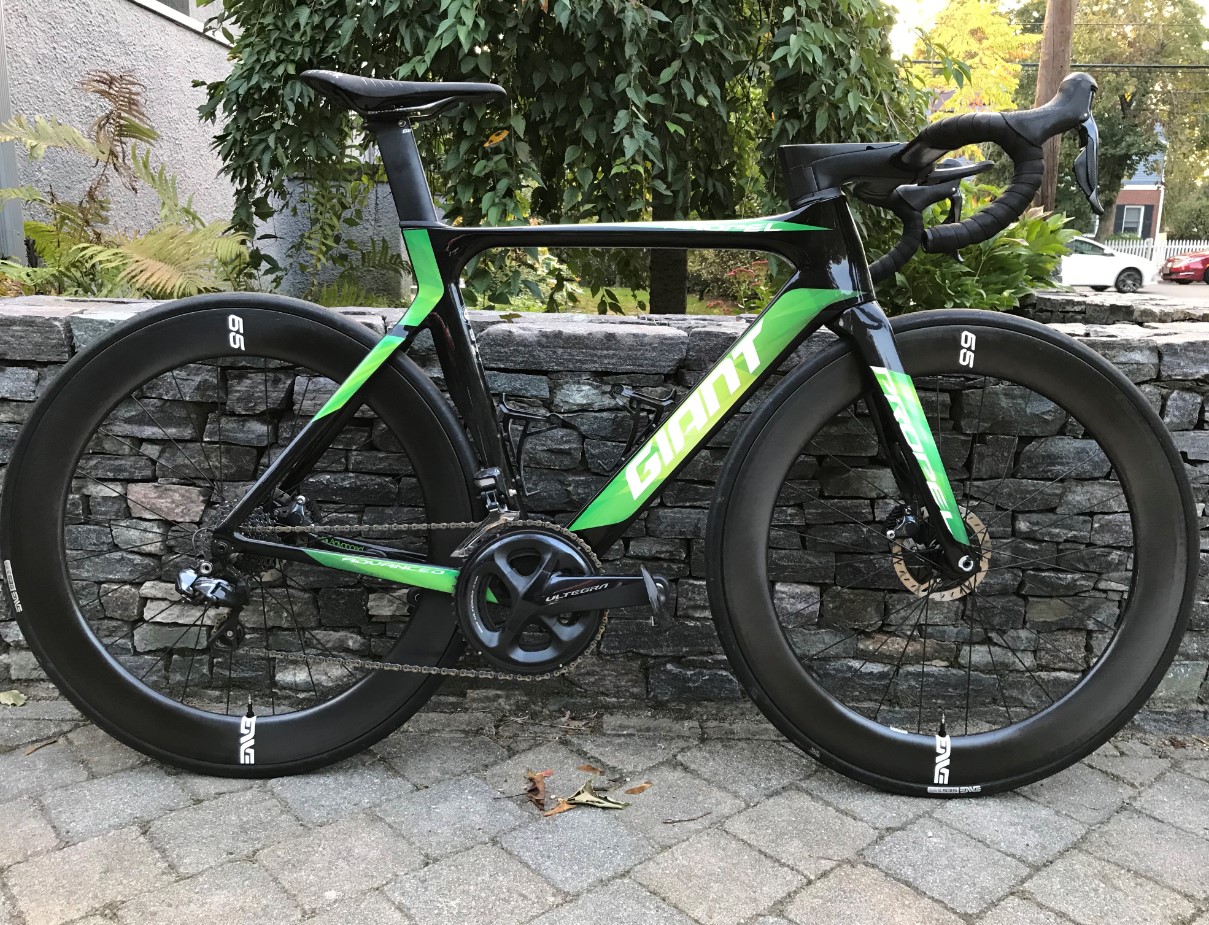
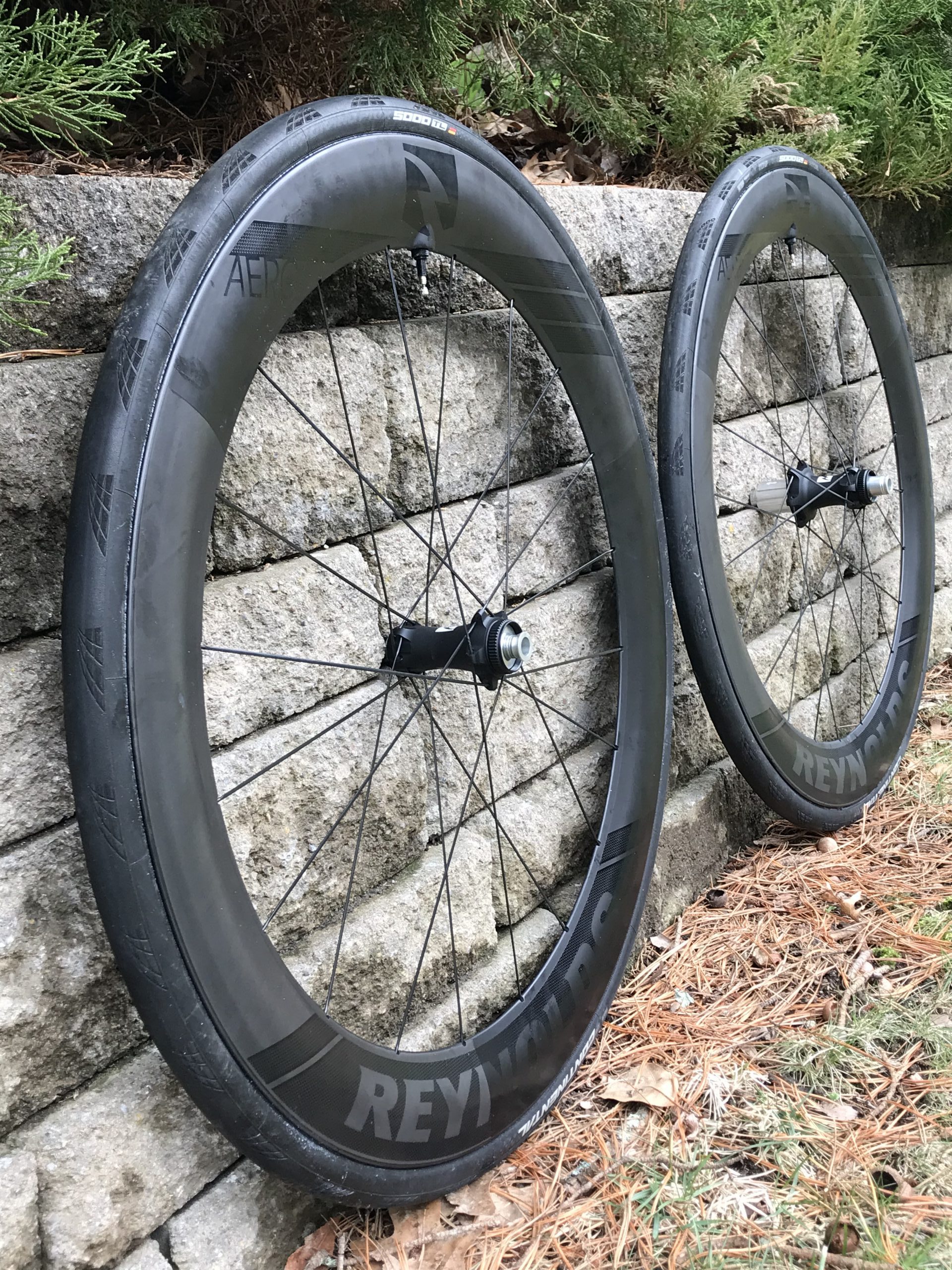
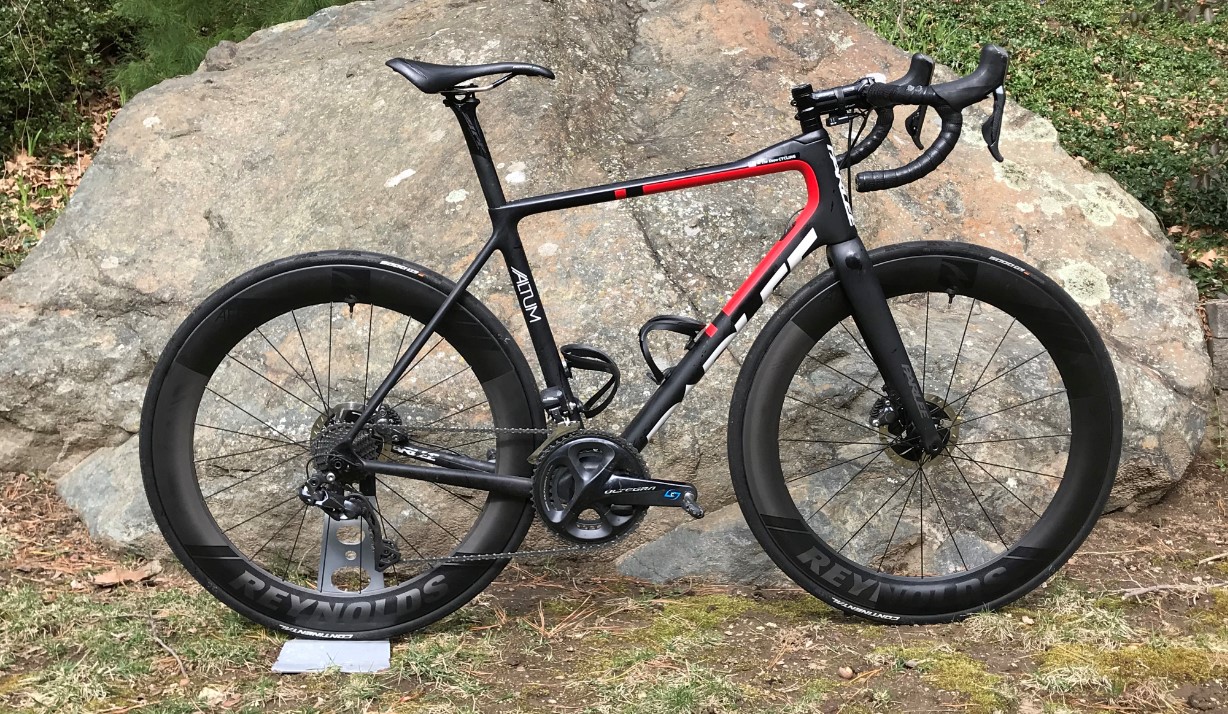
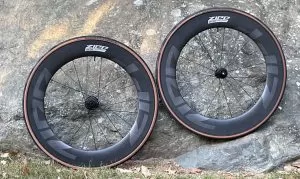
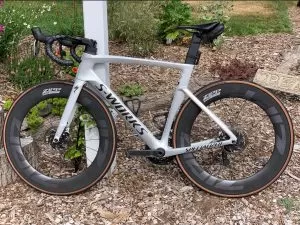
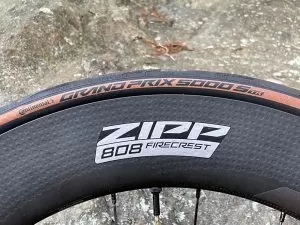

Hi Steve. Why is there such a difference between the acceleration of the rim and disc bontragers?
Danny, Good point. I’ve reviewed our test notes and I had the acceleration for the disc brake Bontrager too high. It’s clearly not in the same class as the ENVE 5.6 disc and more like the others I noted with a 0 the rating for the average of those we reviewed in the disc category. I’ve now fixed the chart to reflect this. As to why the Bontrager acceleration is now rated 0/average for the disc version and still -/worse for the rim, I’ll note that these are comparative ratings against a group of different wheelsets in the disc and rim brake categories and with one different tester along with Nate and me. Steve
Hi Steve,
Another great overview.
I’ve noticed from your past review of tubeless tires that very few 25c tires pass the 105 rule on the Aeolus XXX 6.
Curious how that influences your assessment of the relative aero performance of the wheelset.
Cheers,
K.
Kevin, There are a few that will pass the rule or come very near to it depending on where you inflate your tires. I use an 80psi pressure level for my comparative testing. That’s appropriate for a 175lb rider. The 25mm Tangente Speed Road Tubeless, my best performer recommendation comes in 104% at that pressure. If you are lighter, then you inflate to a lower pressure level which makes the tire be a bit narrower and put you at or above 105%. I ride at 145-150lbs and 70-72psi so that tire gets me (and Miles and Nate).
The new Bontrager 25mm R3 tubeless tires, one I’ve yet to post a review of come in at 104.5% at 80psi on the XXX 6. So drop the pressure a touch you are at 105%.
Of course, if you are a heavier rider, you’ve got to go with 23mm tires to get 105%+. The most serious aero riders, those doing time trials or TTs will pull out all the stops including narrower tires to get the max aero performance. If you’re into 28mm tires for their comfort, you probably aren’t out there looking for an aero wheelset and tire combination that gives you 105% but there are choices like the Roval CLX64 or the ENVE 4.5AR with a 28mm Specialized RapidAir or Schwalbe Pro One TLE that will give you that. Steve
Thanks Steve!
When deciding on wheel/tire combinations would it be a fair assessment to conclude that going from just over 105 to just under 105 (e.g., 107 vs. 103) amounts to splitting hairs, given all the trade-offs involved?
I noticed that Enve’s new SES tires include a 27c that is explicitly designed for max aero benefits if rocking one of their AR wheelsets. They claim it will grow to 30mm on a 25mm internal (50-85 psi), which puts it at 104 on the 31.2 mm front rim of AR4.5.
Obviously, with a series like the AR the manufacturer is trading off a variety of performance factors, but would you speculate that part of the reason for accepting this narrower wheel/rim ratio is the added aero benefits that a hookless bead supposedly provides (limiting disturbance at tire/rim interface)?
Also interesting to reflect on the fact that the AR series was designed at a time when 28c tires were far far wider. The wind tunnel tests I’ve seen (large grain salt – but impressive on the face of it) of the AR 4.5 were done with old pro ones at around 31mm measured (e.g., Tour Magazin, Hunt, and Enve’s own testing).
As always greatly appreciate your expertise and candor.
Kevin, From what Mr. 105 (Josh Poertner) has written (see my tubeless article for links), things drop off precipitously below 105 and improve incrementally above it. As to the ENVE SES tires, my jury (Nate, Miles and me) is still out on those tires. We tested a preproduction set and they weren’t as advertised in several ways including sizing. We’ll test some production models in the spring. Meanwhile, if you need new tires, I’d stick with the knowns. Steve
Hi Steve, I keep coming back to your articles as I am hoping to purchase a new bike soon (has to be Italian!). Anyway, I am still trying to pick a pair of carbon disc wheels. I am looking for an all-rounder, and I am also hoping to go to the Dolomites in the future. I keep trying to locate an article you did about myths or change of opinion on wheel depth. While I have mostly rollers where I live, there is also a lot of crosswinds, and that is the biggest issue from keeping me from purchasing a deeper rim tire. Can you add a link where you have talked about this? Thanks!
Stephen. Thanks for the feedback. See #2 https://intheknowcycling.com/5-beliefs-about-choosing-cycling-gear-dropped/. For all-arounders, check out this one https://intheknowcycling.com/carbon-disc-wheelset/ Cheers, Steve
If one is racing in bunches (i.e. most of club racing) then aero wheels have NO HELPFUL EFFECT. The bunch is being aero for you.
If you’re off the front they’ll be a help but few of us get to do that. If you’re off the back of the bunch…your race is over!
Light weight wheels will always help over heavier wheels up climbs – even short non steep climbs.
The choice is simple – light weight wheels over aero wheels for racing.
Aussie and NZ being flat – really?! If they’re so flat then disc wheels aren’t needed.
NZ – a lot of it is hilly. Most of my riding (I aim for the hills) and a lot of my racing here in Auckland is hilly.
Regards, Paul
Paul, Thanks for your perspective. I agree with you about the aero effect of the bunch and won’t argue with you that there are hilly sections in every country including NZ and AU, even though most of both are pretty flat. But light wheels only give you an advantage in the mountains – long, 7-8% climbs. The benefit of light wheels on short hills vs. aero wheels that might be 150 to 200g heavier but can carry more momentum into a short hill and better speed heading down is debatable.
As long as you are riding fast enough, aero wheels are better on flats, sprints, crits, non-mountainous road races when tactics matter, TTs, triathlons, solo rides, downhills, and when you are doing your share of the pulls on small and large group/club rides.
I love a good, light climbing wheelset when I head to the mountains but hate when their speed tops out or I have to work too hard to keep their momentum up on flatter sections.
As to disc vs. rim, that’s a discussion for another day 🙂 Cheers, Steve
Hi Steve,
I see your mention of HED alloy wheels in your article and that you say to look else where. I know everything is about Disc wheels lately but people with rim bikes should still take a look at HED Jet 6 plus wheels either regular or black series. In fact, It would be interesting for you to test out a black series out to see how close it is to Disc wheels for braking power. There is lots of data of these wheels on the web showing them very aero and comfortable riding wheelset for years. I currently have the HED Belguim plus wheelset with White Industries T11’s hubs and really love these wheels for training. Have you ever tested the the HED Jet 6 plus and would you ever consider doing so? Also if anyone out there still use the Jet 6 Plus wheels please leave comments about them.
Dave, Haven’t tested the HED Jet 6 but with its alloy rim brake track, I’d expect it’d be as good as wheels with disc braking and better than carbon rim brake wheels. Steve
Are Corima and Lighweight wheels too expensive to review? Also would like to see a review of hubs. DT 180/240 Chris King industry 9 and Alto
Thanks
Chuck, Thanks for your comment.
Being an independent, reader-supported site (rather than an industry-driven, ad-supported one), I want to review what I think the majority of our readers are or should be interested in choosing between and can afford. The Lightweights are indeed expensive and I don’t remember hearing from many readers asking either about them or Corima wheels. There are probably 50 different wheel brands out there, each with many models and there’s just not the time or budget to review that many of them. Price, reader demand, distribution, dealer service, technology, company track record, etc., all come into play in choosing the wheelsets to review.
Of course, if more readers support the site by buying their gear using the links to stores we recommend, buying at Know’s Shop, and the half dozen other ways I’ve laid out, we can do more reviews of more wheels and other gear and kit.
As to hubs, we review them as part of wheelsets. Most readers aren’t building wheelsets from rims, hubs, and spokes so we review how the hubs perform in a wheel system that you can buy rather than as independent components. Steve
Well thanks so much for taking the time to respond. I may be spending more time on here and making future purchases form your recommended sites. Thanks again and have a great week!
Hi mate, a bit late to the party but this popped up in my google recommendations. Is there any reason yourself (and every other reviewer) neglects reputable Chinese manufacturers when they review wheels? I.e. Far Sports, Yoeleo, Lun/Hyper?
Considering the major difference in cost, the minor difference in aerodynamics if there is a repeatable and measurable one, and the fact they are even uci approved and tested, they represent a much better value for money proposition for most people.
Jaime, I not only didn’t neglect Chinese manufacturers, I researched and wrote two 10,000-word posts about those manufacturers, companies who brand products sourced from those manufacturers, and compared wheels from those two groups and from integrated and regional suppliers. You can read those posts entitled The Best Carbon Wheelset for the Money here and here. Take a read through those posts and come back and let me know what you think about the value proposition. Steve
Hello Steve, any news on when the review of the RSL62’s are in?
Im about the pull the trigger on ordering a 60’s set but its between the Enve 5.6 alloy hubs, Campagnolo WTO Db Ultra or Bontrager RSL 62’s
Bontrager costs approx 1800£ in UK, WTO ultra’s around 2500£ and Enve’s 5.6 around 2500£ as well at the moment
All great wheels I am sure however if your review of RSL comes out positive its a bit of a cost saving compared to the 2 other options. Bontrager are also the more wider and modern dimensions of the 3.
Thanks
Eric, It’s up. Honored that you were awaiting my review to help make your decision. Would welcome your support when you make your purchase so we can keep cranking out reviews to help you and others make those decisions. Cheers, Steve
Hi Steve, great thanks for that.
Well it seems Enve is still
Topping the throne!
Amazing how they still keep at the top of the list for best overall aero wheels
Thanks again
Hi Steve,
I was about to place an order for the Zipp 404 Firecrests based on your reviews (thank you!) but am now reevaluating given tire compatibility concerns with the 23mm internal rim width. Based on what I’ve found from various manufacturers, it looks like 25c tires are not generally recommended for this inner rim width (max widths I was able to find below):
– Schwalbe Pro One TLE: 22m (I know you’ve used these with the 404s, but they appear out of spec based on what I’ve been able to find)
– Goodyear Eagle F1: 22mm TSS
– Continental Grand Prix 5000 S Tubeless Ready: ?21TSS (just announced)
Given the 404 Firecrest is designed for 25c tires, it seems like there isn’t a great way to adhere to tire manufacturer recommendations while also maintaining the maximum aero advantage. For my riding, the specs of the 404 are definitely appealing over the deeper and heavier Enve 65, but the within spec 21mm inner rim width of Enve is making me reconsider.
Do you think the maximum widths are a result of tire companies being overly cautious, and it’s fine to use these tires with a 23mm internal width rim, or do you think Zipp missed the mark a bit on this one and fell just outside the allowable range as standards have evolved?
Thanks again for your reviews and all the work you put into the site!
Jason
Tire compatibility references:
https://www.schwalbe.com/files/schwalbe/userupload/Images/FAQ/reifen_felgen_2020/Reifen_Felgenkombinationen_2020_EN.pdf
https://www.goodyearbike.com/tires/eagle-f1/
https://www.continental-tires.com/bicycle/tires/race-tires/grand-prix-5000-s-tr
Jason, It’s a shame but tire and wheelset companies have never been on the same legal wavelength and the ETRTO hasn’t been able to bring them together. Independent tire companies like the 3 you’ve cited are super cautious legally and end up recommending wider tires than most enthusiasts I know ride on. Many wheelset manufactures will tell you what width tires they developed their wheels around for maximum speed, handling, and comfort but, with few exceptions like ENVE, won’t tell you which tires their wheels are compatible with.
And you are only talking about tire width. If you dare look at the min pressures on tubeless tires these days, they are almost always higher than the max pressures recommended by wheelset manufacturers. It’s enough to make you take up running.
I can only share what we’ve learned about tire and wheelset performance, often in combination, as I’ve done in my reviews. I can’t explain or try to mediate between the two groups of suppliers. Steve
Thanks Steve!
I did some more digging and, for what it’s worth, found the following line in the article linked below: “Despite the latest ETRTO guidelines specifying that 25 mm-wide tires are safe to use with 23 mm-wide hookless rims, Continental explicitly does not approve of that combination.” Continental compatibility aside, it gives me confidence knowing this tire/rim combination is approved by ETRTO (though I haven’t been able to find their source documentation).
Definitely hear you on the pressure issues as well..
Thanks again,
Jason
Article: https://cyclingtips.com/2021/10/continental-grand-prix-5000-s-tr-tubeless-road-clincher-officially-announced/
Sure, and if you go to the Zipp tire pressure guide, https://axs.sram.com/guides/tire/pressure, a 25mm tubeless tire on a 23mm hookless rim for a rider my weight (150 lbs) calculates to about 65psi pressure. I’d expect that Conti is saying don’t put a 25mm tire on a 23mm hookless rim because someone is going to ride it at 100psi forgetting they are wider rims and tires and there could be a problem (though they design these things not to fail until well above any inflation pressure a rider would try – 150psi).
FWIW, the 25mm Schwalbe Pro One TLE measures about 27.5mm @ 80 psi on Zipps 23mm 454 NSW, which have the same rim widths as the 404 FC. Nate, Miles, and I have all ridden those tires on those wheels and Miles successfully raced them several times this summer without issue, albeit at a more reasonable pressure.
Note: If you weigh more than 175 lbs, you are better off going with a 28C tire. The recommended inflation pressure for your weight and a 25C tire would put you above the recommended inflation pressure for this rim (74psi).
Your mileage may vary…
Enough already. Cheers, Steve
Hi Steve- I’m looking at a used Mavic Comete Pro SL UST (64 mm) vs a Cosmic Pro UST (40 mm deep) for all round riding… mostly flats with some rollers. How should I think about the two? Is the Comete mostly for TT and Cosmic better for all round? Or is it sort of shades of grey where both could work, with more flats geared and the other toward climbs?
Thanks
Biren
Biren, Frankly, I’m not a fan of either of those wheelsets. The Comete is/was a traditional flat road, TT focused wheelset while the Cosmit Pro attempted to compete on rollers and climbs. We rode both of them a few years ago. The Comete was slow to accelerate and didn’t maintain its speed well compared to others of a similar depth of that time. The Cosmic Pro wasn’t as responsive and didn’t handle or climb well, again compared to others of that era. Mavic has moved on from both. Not sure what your goals are in considering these but if it’s budget, I’d suggest one of the better-used wheels of that era or one of the lower-priced new model ones. Steve
Hi Steve- thanks. My goals are mainly to get a wheel set for mostly flat with some rollers riding on a second bike that I usually travel with. It’s not what I ride on a regular basis so looking to strike a balance between need and price. I found these for around $900 with either very low miles (Comete) or new (cosmic). I found a zipp 404 too but mileage on that is unknown and it’s back from the aluminum brake tracks era
Biren, for that purpose, the Cosmic is definitely the better of the two but you might want to keep looking for a better-performing wheelset. Steve
Hi Steve- what’s your opinion on a used zipp 404 Firecrest all carbon clincher for my needs? I found it for a pretty good price on eBay. I recall reading a favorable review by you about the 303s but think the rear wheel of that model may be a tad too wide for my 10 year old bike.
Thanks
Biren
Steve- also The 404 Firecrest is a 2014 version with low miles. Thanks
Biren, Hard to judge, especially for a wheelset that old. Unless you know the owner, history, or can inspect it yourself, I’d be tempted to steer clear of any used wheelset. Steve
Hi Steve, I have a choice between Bontrager Aeolus RSL 75 and the Dt Swiss ARC DICUT 1400 80mm. The latter is £500 cheaper than the Bontrager. Bontrager is about 200g lighter, a bit shallower (75mm vs 80mm) and has different rim width profile (23mm int and 31mm ext VS dt swiss at 20mm int and 32mm ext). Both would abide to 105% rule.
Same hubs dt swiss 240 exp which I love.
Bontrager spokes are the lightest (aerolite dt swiss ), whereas the dt swiss wheelset uses the aero comp (slightly heavier and stiffer which will give more lateral stiffness).
I can see you’ve tried the Aeolus rsl 62 and doesn’t sound like a great review…
Dt swiss has the name, reliability and quality. Plus they have done a lot of research into the aero stuff and their wheels aero design come from Swiss side. However, they are 200g heavier (not that much but still..) and have a narrower rim profile. I’m quite interested in the 23mm internal rim width of the Bontrager Aeolus.
I would use 25mm conti gp5000 clincher with latex tube, both rear and front (or perhaps 28mm at the rear, as it’s still aero)
What’s your view? Thanks so much
Luca, I’m afraid I can’t give you a ride-test comparison for these two wheels. We don’t test or ride wheels so deep. Also, I’ve never seen that specs can predict performance so I won’t judge them on the basis of the specs you mentioned.
I assume you are planning to use these on a time trial or triathlon event. As you know, your body aero position and bike frame will be more important to your aero performance than your wheels. Both Bontrager and DT/Swiss Side have very capable wheel design and testing programs so I don’t see much difference there. Likely no significant difference in aero performance (less than a couple watts) due to the depth or width differences. DT and Bontrager are both strong brand names, though perhaps in different parts of the world, and both make quality products with good customer support so little difference there. Bontrager has been one of the handful of leading wheelset designers for many years along with Zipp, ENVE, and perhaps a few others. DT Swiss has always been a strong OEM supplier (making large volumes of stock wheels that are branded by Giant and other bike suppliers for their new bikes). It is just for the last generation of ARC and ERC wheels that DT has contracted Swiss Side to design the DT Swiss wheels. I’ve not seen any independent tests that compare the new DT ARC and Bontrager RSL wheels.
Two considerations may be more important to your wheelset choice:
(1)Is one front wheel more stable in crosswinds than the other? If the course you’ll be riding these wheels on has a lot of wind, a wheelset that is less stable will likely cause you to get out of your aero body position more than one that is more stable. When you get out of that position, you can lose a lot more watts (40-50 watts) than any aero difference between the wheels of the same depth. I don’t know how the RSL 75mm compares to the ARC 80mm on crosswind stability but neither may be appropriate for a front wheel if you are riding a windy course. A windy course will usually cause riders to go with a shallower front wheelset (50-65mm) even though it may be less aero than a deeper one (5-10 watts) to avoid having to get out of the aero body position.
(2)How flat is the course? A course that is flat will favor a heavier wheelset as it will maintain your momentum better than a lighter one (heavier “flywheel”). A lighter wheelset (and 200g will be noticeably lighter) will help you do better on a course where there are hills. It may only be a few seconds better (and less tiring) over a 40K course but in a TT or triathlon, those seconds can make the difference
Steve
Thanks so much Steve. All very important considerations, thanks for your input.
I have only been able to find two ride reviews online for the Bontrager Aeolus RSL (and none for the 75mm version). How did the tyre pressure drop feel on your ride? I mean, the fact that is 23mm rim internal width, did it help compared to a 20/21mm, or did it feel “strange” on the road? I’m not too sure about the Bontrager 23mm rim width for a 25mm tyre setup (front and rear)…. Thanks for any feedback you have there.
Luca, No, doesn’t feel strange. ENVE, Zipp, Bontrager, Roval, and even Shimano’s new wheels are all wider than 21mm internal. Wider wheels allow for lower tire pressures and reduce vibrations (vertical hysteresis or impedance) that can further reduce the amount of power you need to put out to maintain a certain speed. Steve
Hello Steve. I have a Ridley Kanzo Speed (11 spd Ultegra) gravel bike that I want to make into more of a road bike. I’m considering dropping ~$2000 into it to achieve those aims. The bulk of that money will go into a wheelset and tyres. I live up in the mountains at 7000 feet. The bike will be ridden on tarmac (some new and some old, rough and cracked) and the terrain varies from flat to rolling to quite steep. I’d like to go with 28mm tubeless tyres. I’m looking at Zipp 303s, Bontrager Aeolus Pro 5 TLR, Hunt 33, Roval Rapide 38. I would like some aero, some lightness and some kind of replacement policy for if/when I hit a bad crack and damage a rim. Am I barking up the wrong tree with my shortlist?
Howard, none of the wheels on your list will give you the combination of “some aero, some lightness” and also be suitable for “terrain varies from flat to rolling to quite steep.” Those are either too heavy (Bontrager) or too shallow to be aero (rest). There’s really no wheelset that does everything you are looking for, at any price. In the price range you’ve mentioned, I’d suggest the Zipp 303 Firecrest (my review here) for a bit more climbing than aero capability (it’s also a good gravel wheelset) or the Bontrager Aeolus Pro 51 (here) for a bit more aero than climbing. Steve
Thanks for your thoughtful reply. I’ll check out your suggestions.
Hi,
Any reason the 454 NSW is not there ? From your other review you seem pretty much in love with them.
Also, i do have Giant TCR Pro 1 disk with SLR 1 hookless wheels. How big the difference would be with either the Envy 5.6, Zipp 404 or 454 NSW?
Thanks !
Ben, as it is capable on such a wide variety of terrain, I look at the 454 NSW as more of an all-around and put it that comparative review (here).
Since Giant wheels are only sold with Giant bikes, I’ve not had an opportunity to test them. My fellow tester Miles has a Giant Propel aero bike which came with SLR 2 wheels and he would prefer to ride any of the wheels you listed and the others in this review before the Giant wheels. How big a difference you would notice really comes down to what kind of rider you are. If you’ve been riding for a while, ride at aero speeds, race or do A or B level group rides, or just like to go fast, and want to upgrade, I’d expect you’d notice a big difference with all of the wheels you listed. If you are just getting started or just upgraded to a new bike, you might want to ride it for a season and see what you like or don’t like about the wheels and the kind of riding you are doing to determine what wheels would be best for you. If you go to that link, there’s a profile in the post you can do about your riding that might help you decide. Steve
Thanks Steve for the fast reply, very appreciated !
I’ll look at the links you provided 🙂
Thx Steve for this comment on Miles’ preference over the SLR 2 wheels. I too have those wheels on my Propel. And I was itching to upgrade / try the more budget friendly 404 Firecrest. PS. still riding a pair of Fulcrum Quattro DB that you once recommended in 2016 on my Defy.
Hey Steve, i’ve been doing more research since my first post. The ENVE suits more my budget than the 454 NSW and i have a bike shop that has 4.5 AR and 5.6 in stock…
Considering i am a 200 pounds and will be running 28C tire what would you suggest ? I feel i might respect more the 105% rule with the 4.5 AR and will be more comfortable for longer ride but will i leave a lot on the table as far as performance (speed, acceleration, climbing) ? I have 301 FTP so that put me about Cat B ish… I do some climbing but most of the time it’s more roller and flat. Most ride are between 40 KM to 80 KM with about 300-400 meters of elevation. My biggest climbing training route is 60 KM for 650-700 meters. I also plan to keep my stock wheels SLR 1 42mm for when i resell the bike so i can put them on if i need to for bigger climbing route.
Thanks !
Ben, I don’t make individual rider/reader wheelset recommendations based on the kind of info you’ve shared. It’s just not comprehensive enough and I don’t have enough time to do it right for every reader who would want one even if it was. That’s why I wrote the post I referred you to in response to your earlier comment. It tells you how to use the reviews I write and a series of questions you can answer to help you pick the right wheelset for your own situation. To use the old saying, it teaches you how to fish (choose the right wheelset for your goals, rider profile, and budget) or gives us a way for me to feed you a fish for a day (have me recommend one for you after having a more detailed back and forth with you on those topics in exchange for you supporting the site). I suggest you review that post or have a more comprehensive discussion with a knowledgeable person at the bike shop where you’re planning to buy your wheels. Thanks, Steve
Hi Steve,
Totally understandable. Thanks for the help and time you invest in those reviews, it is appreciated.
Steve – Thank you for always providing so much great detail and effort into these reviews. They are very helpful. I am torn between Envy 5.6 and Zipp NSW 454. I know you have reviewed the 454 but curious why they weren’t included in the above comparative chart? Or do you not consider them to be in the same peer group as the other wheels referenced? Thanks.
Christian, Categorizing some wheels like these two can be tough. The 5.6 is more of an aero wheelset that can serve as an all-around while the 454 is more of an all-around that can serve as an aero wheelset. That’s why I put the 454 in the all-around review and wrote: “If you don’t want to pick between wheels that would be fast on flats vs. on rolling hills vs. on climbs or in a training ride vs. a group ride, road race, or crit, I recommend the latest Zipp 454 NSW Tubeless Disc-brake wheelset. It will be fast on all those and the fastest around on many of them.” Steve
Steve – Have you taken a look at any NOX wheelsets? I’ve been eyeing their Falkor 55 and was curious if you had any experience with it or the brand at large. Some friends over in the mtb community have spoken highly of them and I’m curious if the company’s delve into road cycling is worth some investigating.
Nate, Had not heard of them so just took a look at their site. Looks like they are principally a rim maker with a MTB experience base and product focus. Their road wheels look a bit on the heavy and narrow side compared to today’s best, the 55 isn’t made in a disc brake version, and as a small company, I don’t see an R&D component or investment that’s key to optimizing the mix of aero drag and side wind stability key to a fast aero wheelset. Specs and first impressions alone can be misleading but there’s nothing I see that suggests you should look into them further. Steve
Hi Steve
I currently use the Roval rapid 50/60 and love them but as you know they are not tubeless. I would like a tubeless wheel set that will help hold my speed (free speed) as my priority, with flat and rolling roads with a climb or two thrown into a days ride. My bike is a Trek SLR 08 Emonda and would like your opinion please. I did consider the ENVE 5.6 but was a little put off by your comments on holding speed as I wasn’t sure at what speed you felt that to be, If I average 20 mph on a solo ride I would be happy but 21/22 mph in a group. Thanks for your feed back.
Gary, At 20 mph solo, the ENVE 5.6 isn’t going to hold you back. When you are doing a group ride in the paceline, drafting will play the principal role in holding your speed. It’s when you are riding the flats and rollers solo or pulling the group (or doing a time trial or triathlon) at 23-25mph where my fellow testers Miles and Nate noticed the difference in holding speed. That’s where the deeper aero-dedicated 62-65mm deep wheelsets will excel, those that zoom up the short rollers from the momentum of their flat speed better than the ENVE 5.6 or Zipp 404 Firecrest but will be notably harder to get up longer or steeper climbs and where you’ll lose contact with the group who may be on shallower, lighter wheels. Steve
Hi Steve,
Just curious that how this ENVE SES 5.6 is rated great performance despite it has relatively narrow internal width(19mm) vs modern wheel (23~25) because wide width makes wheels more faster as per your analysis. Does it have other secret?
Thanks.
Eric, regardless of specs, performance speaks for itself. Steve
Simply answered. Thanks Steve.
Hi Steve, you mentioned the 404 firecrest’s hub is very loud. How do you compare the hub sound of the 404 firecrest to those of Scribe and Hunt’s wheelsets? And would you say the performance difference between Scribe’s Wide+ 50D and the 404 Firecrest justify the price difference? Thank you!
Bruno, Scribe and Hunt freehubs are far louder than the 404 Fircrest. My ears couldn’t bear the Scribe and Hunt freewheeling and neither could many people coasting near me. You and others may be fine with it. The 404 Firecrest freehub volume and frequency is distinguishable but not off-putting unless you like a virtually silent hub. I’d refer you to my reviews of the Scribe and 404 Firecrest to best describe the performance differences and how well they suit your riding profile. The 404 FC is more versatile while the Scribe is good at what it does best. Whether that performance difference justifies the cost difference is really for each rider to decide. Steve
Thank you very much, Steve!
Hi Steve, will you be testing the Zipp 858 NSW? Please 😀
Tom, not going to test that one. Wouldn’t expect to feel much difference in performance for all but the top TT/Tri racers and even with that, would be hard to justify the 2x price. Steve
Hi Steve,
I am a bit surprise by this “On more variable terrain, ones with short, punchy climbs, or in situations where quick accelerations are key to closing or opening gaps, the SES 6.7 would take a lot more work compared to riders around you on more responsive wheels.”
When you compare them to more responsive wheels, does the 4.5 SES are one of them or you are talking about even more shallower/lighter wheels ?
One thing i can’t get my head around is that the new 6.7 is about 1497g (claimed) with the XDR which very close to the 4.5 and considerably less than the old 5.6. From your review it seems that even with those spec they feel more sluggish, less responsive than these models and act more like a “normal” aero wheelset. I am currently running Black Inc Sixty on my Factor Ostro Vam which are 56mm deep and 1587g, 21mm internal, 30mm external. I recently ordered the new 6.7 thinking i would gain a bit more aero, less weight (maybe little better climbing) and more compliance (23mm internal and hookless so about 10 psi less than current setup). I am doing a lot of 19-23 mph solo rides and i live in mostly flat terrain with some short climbs. I am using 28c GP5000 S TR, 86 kg, 340 FTP.
Am i missing something there ? Should i reconsider the 4.5 instead ?
Thanks !
Benoit. You’re biased by the wheel weight spec. A whole lot of things play into wheelset responsiveness – rim weight, profile and layup, spoke angles, tension and lacing, hub flange diameter, etc. all play a role. Take a look at the comparative performance table in my review of all-around wheels to see which we found are the most responsive, compliant, stiff, etc. Wouldn’t go any shallower than that for your situation. Steve
Thanks Steve,
I thought weight was probably the #1 key factor for responsiveness, acceleration and climbing. That’s why i couldn’t get my head around it when comparing both wheels. I understand there is other factors as well and stats aren’t always replicate in real world.
I know you ranked them best performer so you must of liked them. But in the end did you preferred the 4.5 and old 5.6 ? How much tradeoff you think there is in responsiveness and climbing versus the 4.5 ? Is it the same kind of small tradeoff in aero the 6.7 has over the 4.5 ? Also any experience with the Black Inc Sixty ? Do you feel i am getting an upgrade versus what i have ?
Thanks !
Benoit, the wheels have different performance characteristics and serve different goals and rider profiles. I can’t suggest which wheels are better for you without knowing a whole lot more about your goals, profile, and budget. You can work through that yourself with this review or become a Know’s Club leader and we can have an extended dialog that will lead me to give you a personalized recommendation. Steve
Thanks Steve i will take a look into those links.
Great article. I have a new pair of 404 tubeless rim brake wheels and I think they’re a 27.5mm outer rim width. I also have a pair of Hunt aero wide wheels which are 27.2. -Both are problematic in that, while they fit fine in situ on my rim braked framesets, out on the road, under load, they flex sufficiently to chafe the chainstays on the inside :(.
Could you or anyone point me towards a modern, narrower cross-section profile aero wheelset please please please? Because, in my experience, even newer rim braked framesets professing to accomodate 28’s, do not do so in reality. I’m happy to ride 25s or 23s to keep my chainstays intact!
Aogan, Here’s my review of the best rim brake wheels. https://intheknowcycling.com/rim-brake-upgrade-wheels/ The most “modern” versions of rim brake wheels like the 303 Firecrest I recommend will have at least a 19mm inside and 26.5mm outside width like this one. That may be too wide depending on your chainstay clearance, how much you weigh, how flexy or stiff the rims are, and how hard you corner. I’d suggest you measure the clearance and look for a wheelset that allows for 4-6mm on either side of the rims. The more you weigh, flexy the rim is, and hard you ride, the more you want to get wheels that give you more clearance. Steve
Hey! Great reviews. How much worse are the 6.7s than the 4.5s in crosswinds?
Andy, Thanks for your feedback. The 4.5 is marginally better in crosswinds but the 6.7 is marginally better on the flats. But for wheels as deep as the 6.7, its one of the best we’ve tested in crosswinds. Steve
Thanks Steve! I’ve really appreciated this website as well as your new YouTube channel. I have some 6.7s on the way. Most of my riding is solo and rolling to hilly. I often do competitive fondos, but am not on a team and frequently don’t have a group with whom to do a paceline so it’s up to me to be as aero as possible. However, I also love to climb and my rides around here (while not mountainous) can be around 1,000 feet of climbing per 10 miles. The road is also frequently poorly paved and with traffic.
It’s unusual that the timed segments in fondos go beyond 7% for significant periods of time.
I should also mention that I do enjoy the occasional “Eddy” Road Bike TT.
I’ve been debating the 6.7s, 4.5s, or the 454s and this would be my only wheelset.
I would greatly appreciate any thoughts.
Andy, With that added context, I would go with either the 454 or 4.5. The 6.7 are really geared more to TT and Tri racing and flatter terrain. The 4.5 would be my choice over the 6.7 on a rolling TT and it will maintain its momentum better than the 454. On 1K ft in 10m terrain, the 454 will be better than the 4.5. If you’re doing road racing where quick acceleration is critical, the 454 will have an advantage as well. But for most of what you describe including the fondos <7%, the 4.5 is going to be the "just right" porridge for you.
Have you read our reviews of the 454 and 4.5? https://intheknowcycling.com/carbon-disc-wheelset/
Steve
Yes I have and came to a similar conclusion. Thanks for the help!